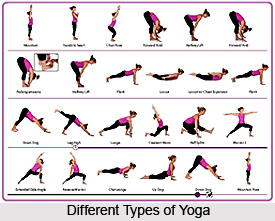 The sixteenth yogic sutra explains about the importance and consciousness of time - past, present and future. In order to grab the accurate consciousness, the sadhaka needs first to master the transformations of nature - dharma, laksana and avastha. This transformation needs involves time and effort. An order of sequence, as described earlier, must be followed. This leads a sadhaka to the awareness of time and also the frivolity of time in the present, because that is continuously being dissolved into the past and the future advancing slowly.
The sixteenth yogic sutra explains about the importance and consciousness of time - past, present and future. In order to grab the accurate consciousness, the sadhaka needs first to master the transformations of nature - dharma, laksana and avastha. This transformation needs involves time and effort. An order of sequence, as described earlier, must be followed. This leads a sadhaka to the awareness of time and also the frivolity of time in the present, because that is continuously being dissolved into the past and the future advancing slowly.
parinama change, transformation, effect
traya threefold
samyamat integration, control
atiia past
anagata future
jnanam knowledge
By mastery of the three transformations of nature (dharma), quality (laksana) and condition (avastha), through samyama on the nirodha, samadhi, and ekagrata states of consciousness, the yogi acquires knowledge of the past and future.
Now Patanjali explains the properties of yoga, commonly known as supernatural powers, which increase by transformations of consciousness.
In III.14, the words santa (appeasement), udita (generation) and avyapade-M (non-manifestation) were used for the past, present and future. III.15 speaks of the order of sequence from the source (dharmi), involving time and effort for transformation. By following this order, the sadhaka observes the natural flow of the present moving into the past, to manifest later as the future, and thereby earns mastery over time.
In this sutra, Patanjali begins to identify the accomplishments which come to the aspirer who has advanced in yogic discipline. The first is the awareness of time. The yogi`s consciousness has transcended the frontier of time - he sees time as ever flowing. Hence he has knowledge of past and future. (Present time is deliberately not mentioned, because its presence is felt). He perceives the orderly sequence of the present slipping into the past, and rolling towards the future; he knows time, its meaning and its impact.
The supposed supernatural powers, discussed from III.16 to III.50, are confirmation that the sddhaka`s yoga practices are accurate. He is advised to intensify them with sustained faith and enthusiasm and to be indifferent towards his achievements, so as to avoid deteriorating into affliction, fluctuation and self-gratification.




















